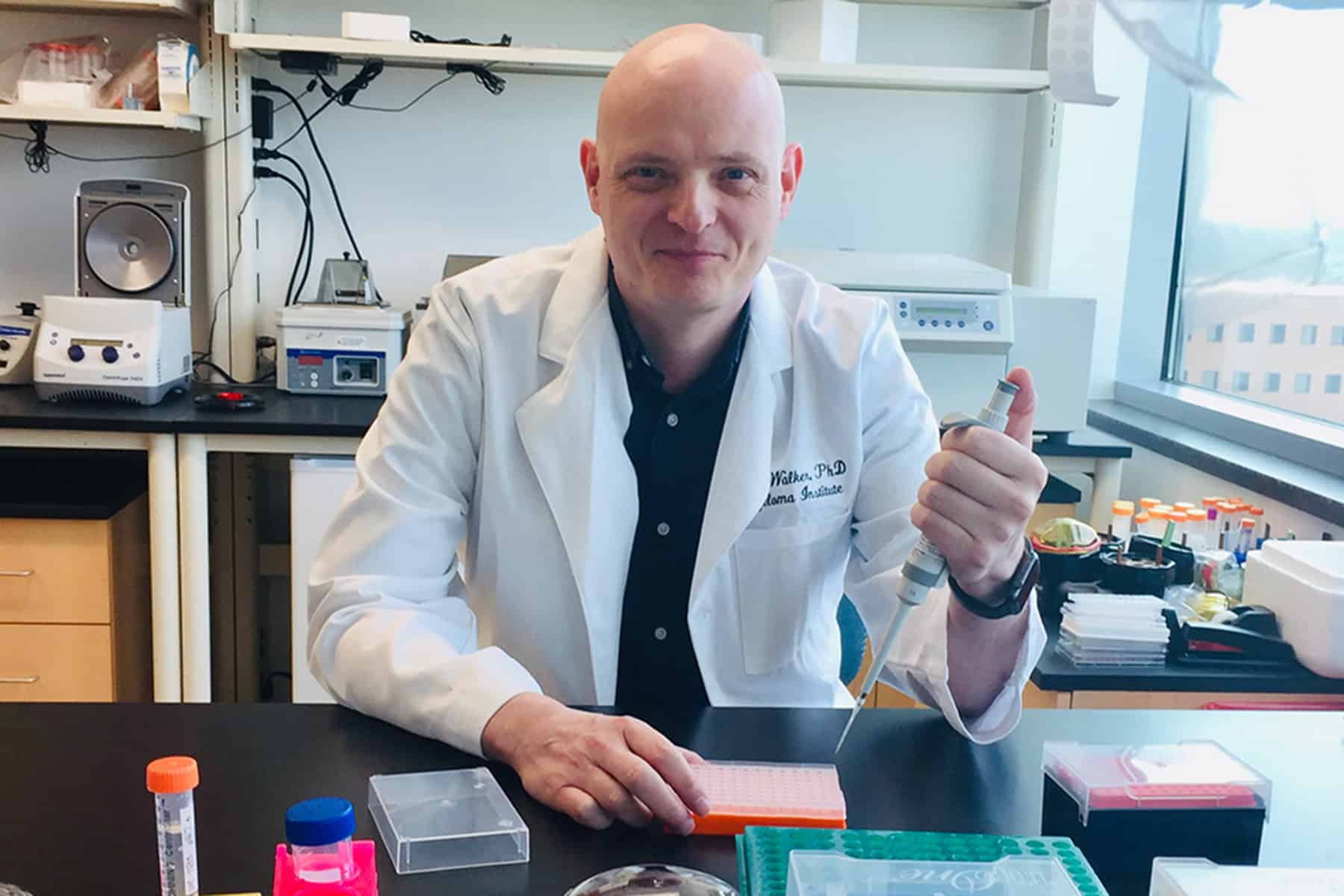UAMS Myeloma Researcher Awarded Nearly $543,000 from Leukemia & Lymphoma Society
| LITTLE ROCK — Brian Walker, Ph.D., with the Myeloma Center at the University of Arkansas for Medical Sciences (UAMS) has received a $542,486, three-year grant from the Leukemia & Lymphoma Society to look at changes in the DNA sequence that effects the development and advancement of multiple myeloma, a cancer of plasma cells in the blood.
The society’s Transitional Research Program award is titled “The Impact of Non-Coding Somatic Mutations on the Prognosis and Progression of Multiple Myeloma.”
“This application cycle was exceptionally competitive with 266 applications submitted and only 33 awarded funding,” wrote Lee Greenberger, Ph.D., chief scientific officer with the Leukemia & Lymphoma Society, in a letter to Walker notifying him of the grant.
An earlier study through the Myeloma Genome Project investigated the mutated genes of DNA in myeloma patients’ tumors. This previous study concentrated on the coding regions of the genome, the exome, where DNA is transcribed into RNA and subsequently translated into the proteins that make the framework of a cell. However, the earlier study only accounted for about 1% of the genome.
“It’s the area we most understand, but it is just a small fraction of the DNA in the cell,” Walker said. “So we’ve recently performed some whole genome sequencing of about 100 myeloma patients to look at what’s happening in the rest of the genome.
The current grant will allow for expanding research into mutations in the rest of the genome, termed the non-coding region of the genome.
Earlier research revealed regions that were mutated outside of the exomes that might also be important, many of them in areas that potentially control gene expression and could lead to increasing or decreasing the amount of protein it creates, Walker said.
“We’ve done a lot of work in the last five years looking at the different mutations in patients that are contributing to disease progression and we still have a number of patients who don’t seem to have any high-risk markers but still have the disease,” Walker said. “These are what we called the missing drivers,” adding that mutated genes cause the disease.
“A lot of patients don’t seem to have any of those drivers so it’s interesting for us to look at the rest of the genome to try to identify those new drivers elsewhere.”
“This grant will take that study forward and allow us to try to determine if any of those non-coded mutations have any prognostic significance in myeloma patients,” he said, adding that the study would include looking specifically at the regions found to be mutated in the original 100 patients.
The second part of the project is adding MGUS and smoldering myeloma patients to the study to see if these mutations are also associated with disease progression.
“We’ll be trying to find new drivers or mutations of myeloma. By finding these new genes, we can identify new targets for future drugs so it could lead to new treatment options in the future,” Walker said.
“The LLS grants are quite prestigious,” Walker said. “Having one shows that our research is well valued outside of UAMS and brings in some grant funding which contributes to the National Cancer Institute Designation that the UAMS Cancer Institute is pursuing.”
National Cancer Institute (NCI) Designation is awarded through a highly competitive assessment process during which cancer centers must demonstrate outstanding depth and breadth of high-quality cancer research, including basic laboratory, patient/clinical and population-based research. It would bring with it an estimated $72 million annual economic impact to Arkansas, along with the ability to receive federal research grant funding and clinical trials only available to designated centers.
UAMS is the state’s only health sciences university, with colleges of Medicine, Nursing, Pharmacy, Health Professions and Public Health; a graduate school; a hospital; a main campus in Little Rock; a Northwest Arkansas regional campus in Fayetteville; a statewide network of regional campuses; and eight institutes: the Winthrop P. Rockefeller Cancer Institute, Jackson T. Stephens Spine & Neurosciences Institute, Harvey & Bernice Jones Eye Institute, Psychiatric Research Institute, Donald W. Reynolds Institute on Aging, Translational Research Institute, Institute for Digital Health & Innovation and the Institute for Community Health Innovation. UAMS includes UAMS Health, a statewide health system that encompasses all of UAMS’ clinical enterprise. UAMS is the only adult Level 1 trauma center in the state. UAMS has 3,275 students, 890 medical residents and fellows, and five dental residents. It is the state’s largest public employer with more than 12,000 employees, including 1,200 physicians who provide care to patients at UAMS, its regional campuses, Arkansas Children’s, the VA Medical Center and Baptist Health. Visit www.uams.edu or uamshealth.com. Find us on Facebook, X (formerly Twitter), YouTube or Instagram.
###
